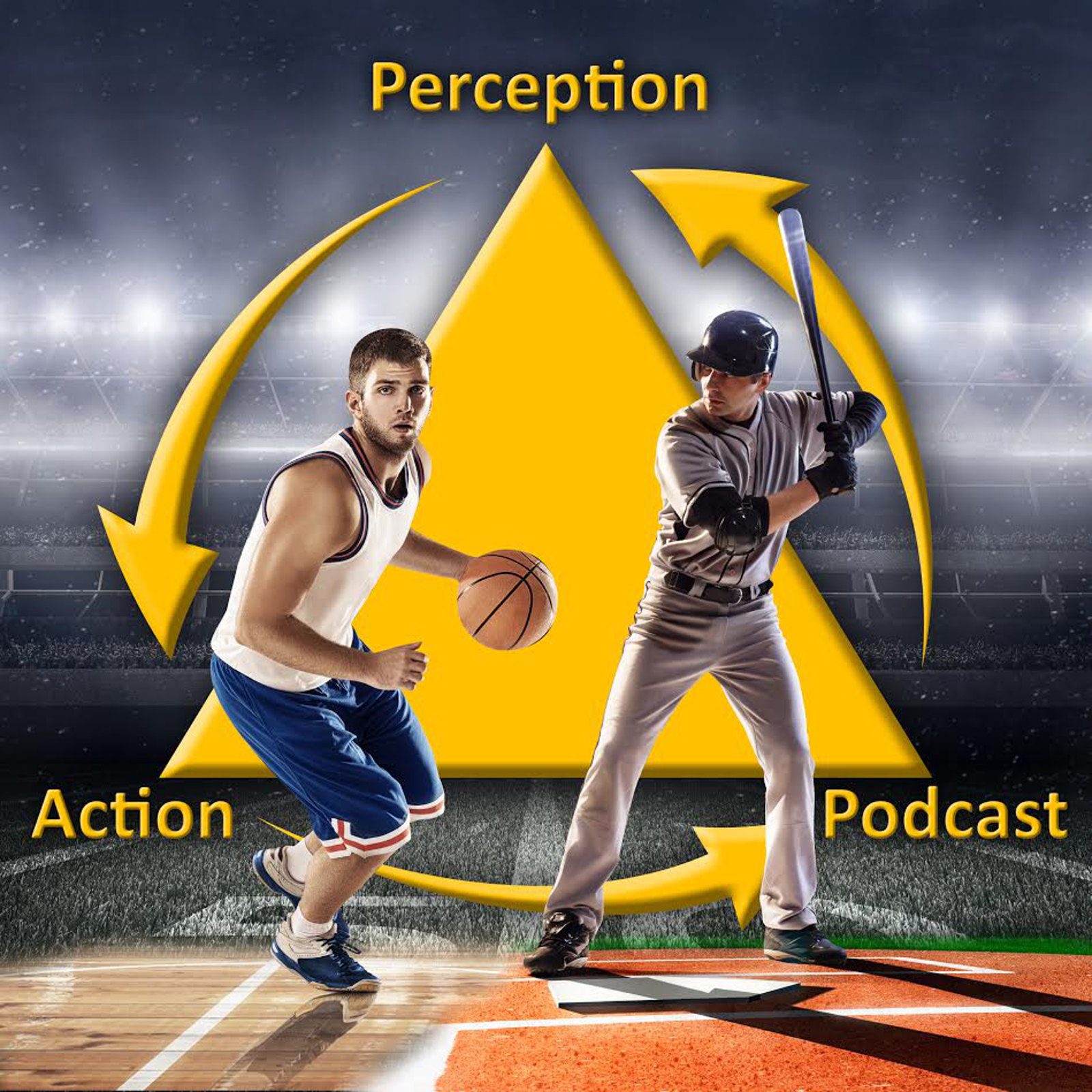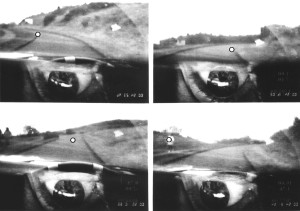22
How does a driver know when to start braking and whether they are braking hard enough to avoid a collision? Where do we look when we steer around a curve? Do race car drivers look somewhere different?
Why is it so hard to hit (and throw!) a knuckleball? (Time: 18:36)
Download link
Key points
• In the initiation of braking seems to occur when the time to collision of a lead vehicle (as specified by tau) reaches a critical value. Brake lights provide and unreliable cue and the absolute distance cannot be estimated accurately.
• As first proposed by David Lee (1976), once we start braking we can control the force we put on the brake pedal using tau-dot which is the first derivative or rate of change of tau.
• If a driver presses and lets off the brake so that tau-dot stays at exactly -0.5 they will come to a stop exactly as their front bumper touches the rear bumper of the car in front. Values less than -0.5 are not sufficient and will result in a collision while values greater than -0.5 will result in the driver stopping short of the lead car
• Research has shown that driver’s do seem to regulate braking use tau-dot but it alone is not enough as the driver also needs to take into account their action capability (the maximum possible deceleration rate they can generate)
• When drivers steer around a curve they spend >80% of the time looking at the tangent point. This results in effective steering because the angle to the tangent point is directly related to the degree of curvature.
• The other portion of time seems to be spent looking at the road directly in front of the vehicle in order to maintain stability within the lane.
• The net result is that steering can be effectively modeled using a two-point model of control
• Use of the tangent point guide steering does not actually require the driver to look at it and it some cases drivers seem to look other places (e.g., where they want to go)
Links to articles discussed:
A theory of visual control of braking based on information about time-to-collision
Time-to-contact judgment in the locomotion of adults and preschool children
Visual control of braking: a test of the tau hypothesis
Affordance-Based Control of Visually Guided Action
A two-point visual control model of steering
Where we look when we steer
Which parts of the road guide steering?
Using vision to control locomotion: looking where you want to go
Expert Baseball Batters Have Greater Sensitivity in Making Swing Decisions
Knuckleball graph link:
http://www.amazinavenue.com/2010/6/10/1511336/why-is-it-so-hard-to-hit-the
More information:
My Research Gate Page (pdfs of my articles)
My ASU Web page
Podcast Facebook page (videos, pics, etc)
Twitter: @Shakeywaits
Email: robgray@asu.edu
Credits:
The Flamin’ Groovies – Shake Some Action
Split Single – Made for Breaking
Wheel on Fire – Hit You With a Kiss
Calexico – Bend to the Road
Mikal Cronin – Turn Around
Apache – Bloody Knuckles
via freemusicarchive.org and jamendo.com

